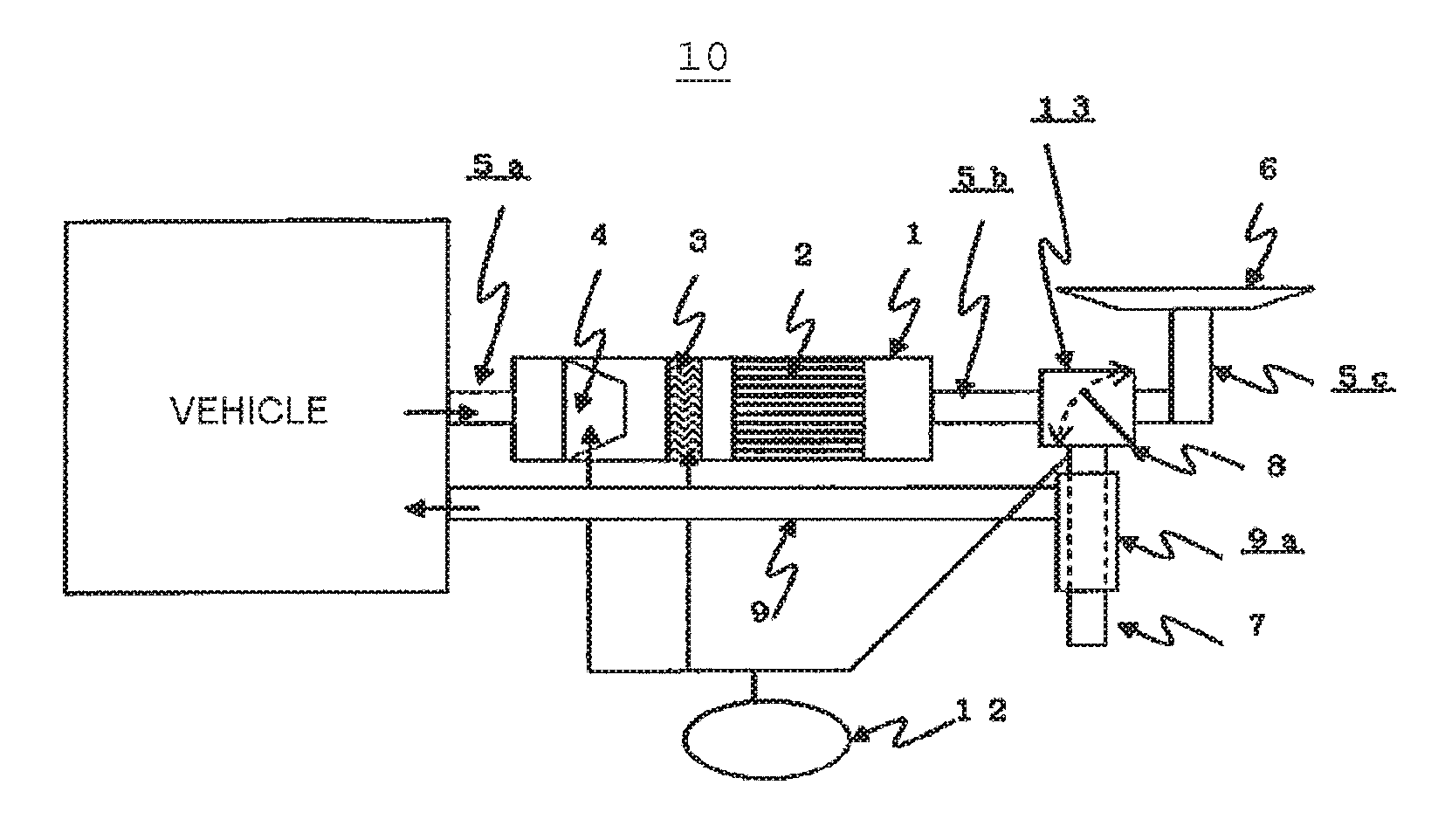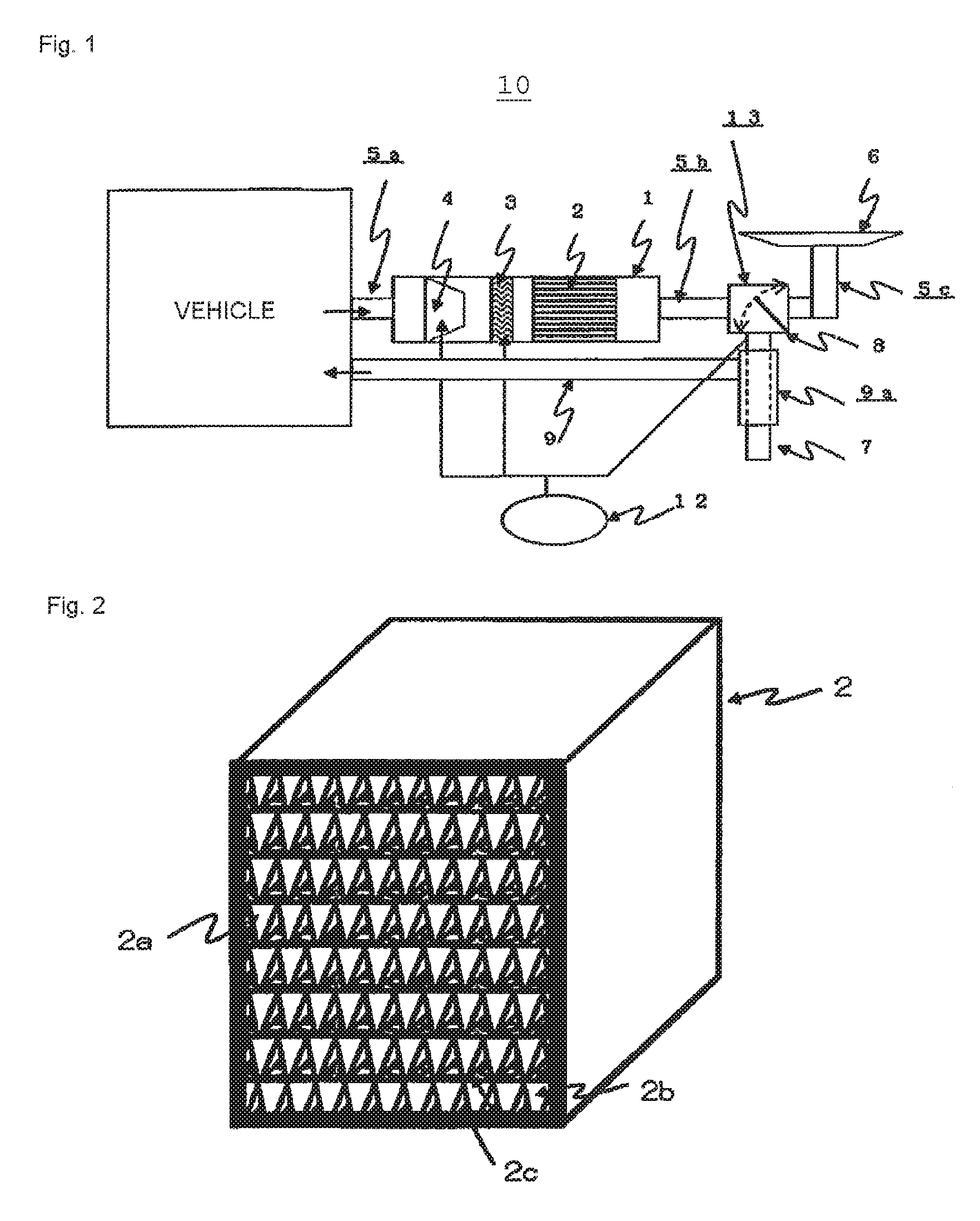Anti-fog and HVAC system for electric vehicles
a technology of electric vehicles and hvac systems, which is applied in the direction of domestic cooling equipment, lighting and heating equipment, and separation processes, etc., can solve the problems of obstructing the driver's view, affecting the safety of driving, and the use of compression refrigeration equipment that is not suitable for electric or hybrid vehicles, etc., to achieve the effect of reducing the increase in absolute humidity, and reducing the haze or fog
- Summary
- Abstract
- Description
- Claims
- Application Information
AI Technical Summary
Benefits of technology
Problems solved by technology
Method used
Image
Examples
embodiment 1
[0025]FIG. 1 shows a schematic configuration of an anti-fog and HVAC system (10) for electric or hybrid vehicles according to the present invention.
[0026]The anti-fog and HVAC system (10) comprises a dehumidification unit (1), a dehumidifying element (2), an electric heater (3), a blower fan (4) (the dehumidifying element (2), the electric heater (3), and the blower fan (4) are contained in the dehumidification unit (1)), a ventilation duct (5b) provided downstream of the dehumidification unit (1), an anti-fog nozzle (6) and an exhaust duct (7) which are provided downstream of the ventilation duct (5b), a guide vane (8) that routes the air flow to the anti-fog nozzle (6) and the exhaust duct (7), a tube (9a) that is concentrically arranged with the exhaust duct (7), and an outside air inlet duct (9).
[0027]The dehumidification unit (1) comprises the ventilation ducts (5a) and (5b) at the respective ends thereof. The ventilation duct (5b) is connected to an air flow routing device (13...
PUM
 Login to View More
Login to View More Abstract
Description
Claims
Application Information
 Login to View More
Login to View More - R&D
- Intellectual Property
- Life Sciences
- Materials
- Tech Scout
- Unparalleled Data Quality
- Higher Quality Content
- 60% Fewer Hallucinations
Browse by: Latest US Patents, China's latest patents, Technical Efficacy Thesaurus, Application Domain, Technology Topic, Popular Technical Reports.
© 2025 PatSnap. All rights reserved.Legal|Privacy policy|Modern Slavery Act Transparency Statement|Sitemap|About US| Contact US: help@patsnap.com


